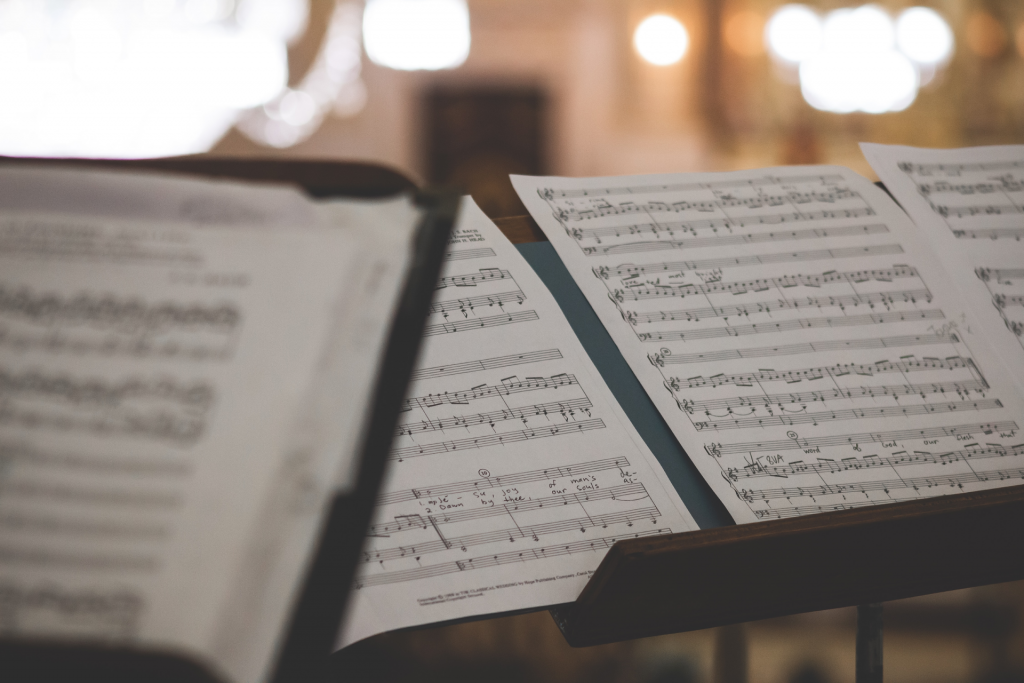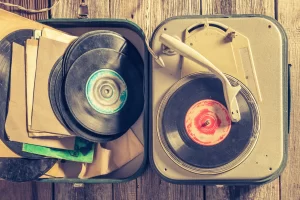Sight reading is an essential skill for musicians, acting as the bridge between written music and its audible interpretation. Yet, it often remains a daunting task for many, mainly due to the complexities involved in translating notations into sounds instantaneously.
We will delve into what sight reading entails, its significance, and the basics you need to comprehend to master this vital musical ability. Furthermore, we’ll explore effective strategies to enhance your sight reading skills and tackle common challenges that you may encounter along the way. Lastly, we’ll touch upon the role of technology in modern sight-reading practices.
Whether you’re a budding musician or an experienced one looking to refine your sight-reading abilities, this guide provides insights that can help you navigate your musical journey with more confidence and proficiency.
The Importance of Sight Reading
Sight reading is a critical skill in a musician’s repertoire, often considered the litmus test of musical proficiency. Its importance cannot be overstated, and here’s why.
Firstly, sight reading opens up a world of spontaneity. It allows musicians to play a piece of music they’ve never encountered before accurately and expressively. This ability is especially crucial for professional musicians who may need to perform unfamiliar compositions on short notice.
Secondly, sight reading fosters musical independence. With proficient sight-reading skills, musicians are not restricted to replaying memorized pieces or relying on auditory guides. They can explore a wide variety of music genres and styles, broadening their musical horizons.
Thirdly, sight reading plays an essential role in ensemble settings. Whether you’re part of a school band, a professional orchestra, or a casual jamming group, the capacity to sight read ensures smooth collective performances. It helps keep everyone on the same page, quite literally!
Lastly, sight reading enhances understanding of musical theory. As you sight read, you’re not just playing notes; you’re interpreting symbols, dynamics, and rhythm patterns. This process deepens your comprehension of the underlying principles of music, enriching your overall musical experience.
Sight reading is more than a technical skill; it’s a gateway to musical versatility, autonomy, collaboration, and comprehension.
Understanding the Basics of Sight Reading
Mastering sight reading begins with a solid understanding of its basic elements. Here are some key components that form the foundation of sight reading:
1. Musical Notations and Symbols: The first step to sight reading is familiarizing yourself with musical notations and symbols. These include notes, rests, clefs, key signatures, and time signatures. Each symbol has a specific meaning and dictates how the music should be played. For instance, a sharp (#) indicates that the note should be played a half step higher, while a flat (♭) signifies a half step lower.
2. Rhythm: Rhythm is the heartbeat of music. It’s crucial to understand how rhythm works in a piece of music to sight read effectively. This includes recognizing different note lengths (quarter notes, half notes, whole notes, etc.) and rests, as well as understanding how they fit into the structure of a measure.
3. Pitches and Keys: Recognizing pitches on a staff and understanding key signatures are vital for sight reading. The position of a note on the staff indicates its pitch, while the key signature tells you the scale that the piece is based on.
4. Dynamics and Articulations: These elements add emotion and expression to music. Dynamics refer to how loud or soft the music should be played, while articulations indicate how notes should be performed (staccato, legato, etc.).
5. Scanning Ahead: A good sight reader doesn’t just play what’s in front of them; they also scan ahead to anticipate what’s coming next. This helps maintain the flow of the music and allows for smoother transitions between sections.
Sight reading is like a language. You need to understand its vocabulary (notations, symbols), grammar (rhythm, keys), and expressions (dynamics, articulations) to fluently converse with it. With a firm grasp of these basics, you’re well on your way to becoming a proficient sight reader.
How to Improve Your Sight Reading Skills
Improving your sight reading skills is a continuous process. It requires regular practice, patience, and the right approach. Here are some strategies to help you enhance your sight reading abilities:
1. Regular Practice: Sight reading is like a muscle — the more you exercise it, the stronger it gets. Allocate a specific amount of your daily practice time to sight reading. Start with simpler pieces and gradually move to more complex compositions as your skills improve.
2. Understand the Piece Before Playing: Before you start playing, take a moment to analyze the piece. Look for the key signature, time signature, tempo marking, dynamics, and any unusual symbols or notations. This helps you anticipate what’s coming and tackle the piece more effectively.
3. Focus on Rhythm: Many musicians agree that rhythm is the most crucial aspect of sight reading. Use a metronome during practice to maintain a steady rhythm. If you make a note error, keep going and stay in rhythm rather than stopping to correct it.
4. Learn to Read Intervals: Instead of identifying every single note, learn to recognize intervals, the distance between two notes. This strategy makes sight reading faster and more efficient.
5. Keep Your Eyes on the Score: Try to avoid looking at your hands while playing. The more you can keep your eyes on the score, the better you’ll get at reading ahead and maintaining the flow of the music.
Remember, sight reading is a journey, not a destination. Don’t be discouraged by mistakes; they are valuable learning opportunities. With consistent practice and a positive mindset, you’ll see your sight reading skills steadily improve.
Common Challenges in Sight Reading and How to Overcome Them
Sight reading, while incredibly rewarding, can pose several challenges even for seasoned musicians. One common difficulty is maintaining a consistent rhythm. This can be especially tricky when encountering complex rhythm patterns or syncopation. To overcome this, practice with a metronome regularly. Start slow, then gradually increase the tempo as you become more comfortable. Additionally, clapping out the rhythms before playing them can help internalize the rhythmic structure.
Another challenge is dealing with key signatures and accidentals. Many musicians find it difficult to adjust quickly to different keys or to remember to play the accidentals throughout the piece. To tackle this, spend some time familiarizing yourself with all key signatures. Practice scales and pieces in various keys to gain flexibility. For accidentals, make a mental note whenever you encounter one and try to anticipate them as you play.
Lastly, anxiety can significantly hamper sight reading abilities. The pressure to play a piece perfectly on the first try can lead to stress and mistakes. It’s important to remember that sight reading is not about perfection, but improvement. Keep your practice sessions relaxed and enjoyable. If you make a mistake, don’t panic or stop; keep going and learn from the errors. With patience, persistence, and a positive attitude, you can conquer these challenges and become a proficient sight reader.
The Role of Technology in Sight Reading
Technology has revolutionized many aspects of our lives, and sight reading is no exception. Modern technology provides a variety of tools that can aid in improving sight reading skills. For instance, digital sheet music apps allow musicians to access thousands of scores at their fingertips, providing ample material for practice. These apps often come with features like adjustable tempo and key, which can make practicing more efficient and customized to the individual’s needs.
Interactive learning platforms have also emerged as a beneficial tool. These platforms offer gamified sight reading exercises that make learning fun and engaging. They often provide real-time feedback, allowing musicians to identify and rectify their mistakes immediately. Such platforms can serve as an excellent supplement to traditional methods of learning sight reading, particularly for younger learners who are more accustomed to digital learning environments.
Furthermore, technology has enabled the development of AI-powered music tutors. These virtual tutors can listen to your performance, provide instant feedback, and even suggest personalized exercises to target your weak areas. They can be accessed anytime, anywhere, making them a convenient and effective tool for learning sight reading. As technology continues to advance, its role in sight reading and music education at large is poised to become even more significant.
To Sum It Up
Sight reading is a vital skill for any musician, allowing them to interpret and perform a piece of music they’ve never seen before. Despite the many challenges it presents, such as maintaining rhythm, adjusting to key signatures and accidentals, and overcoming performance anxiety, consistent practice and the right strategies can significantly improve your sight reading abilities. Remember to analyze the piece before playing, focus on rhythm, learn to read intervals, and keep your eyes on the score.
The role of technology in sight reading is also noteworthy. Digital sheet music apps, interactive learning platforms, and AI-powered tutors have made sight reading practice more accessible, efficient, and engaging. These tools provide a wealth of resources for musicians, from an extensive library of scores to personalized feedback and exercises.
To sum it up, becoming proficient at sight reading is a journey that requires dedication, patience, and a willingness to learn from mistakes. It’s not about achieving perfection, but about continuous improvement and gaining the confidence to tackle any piece of music. With the right mindset, regular practice, and the aid of modern technology, you can enhance your sight reading skills and become a more versatile and accomplished musician.




